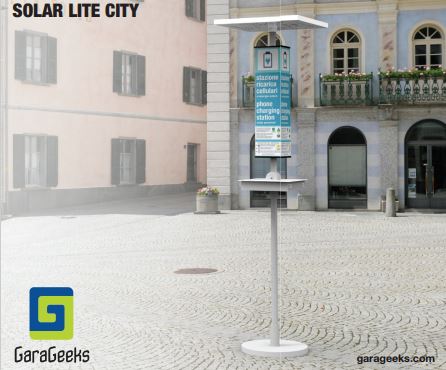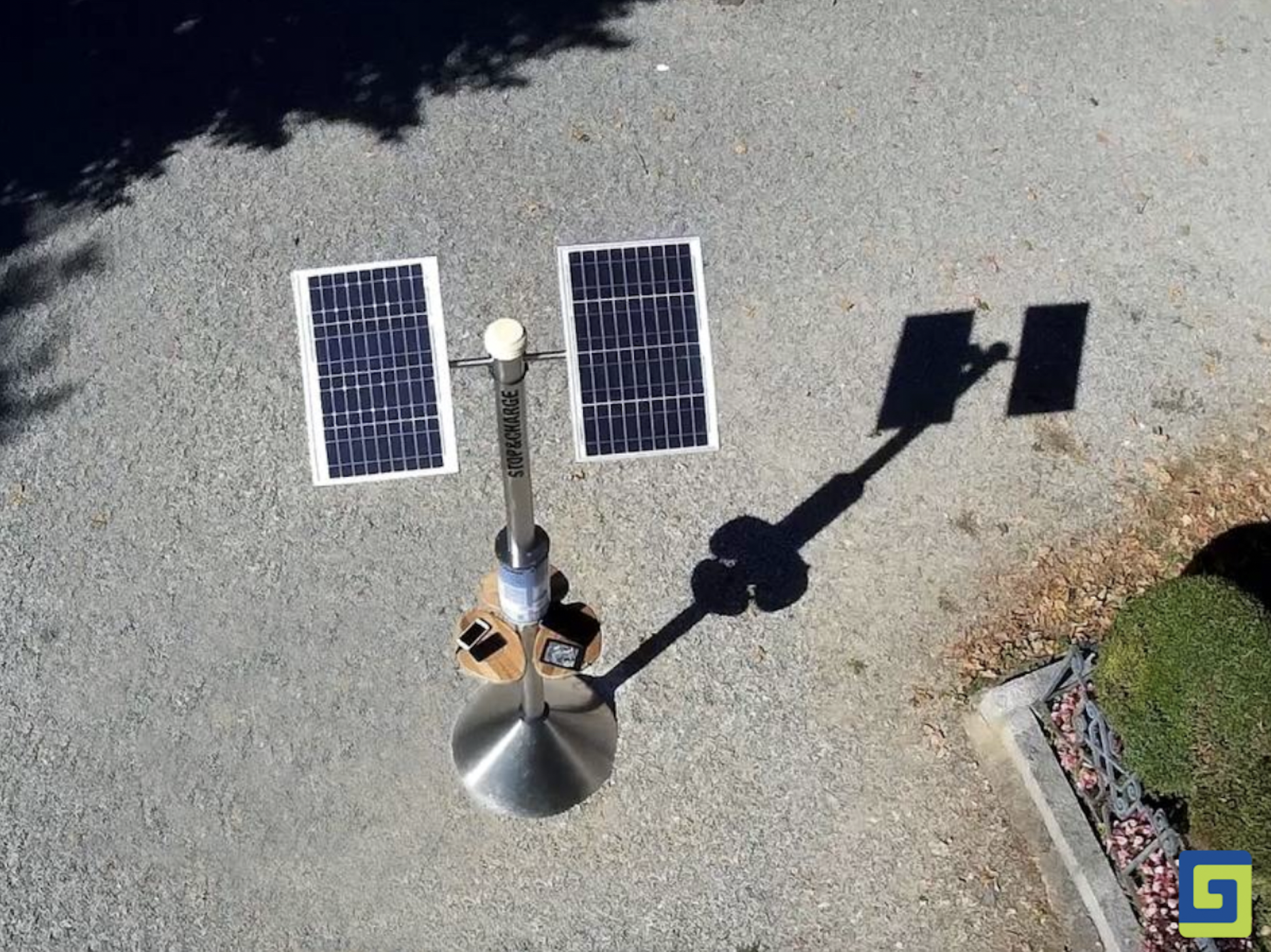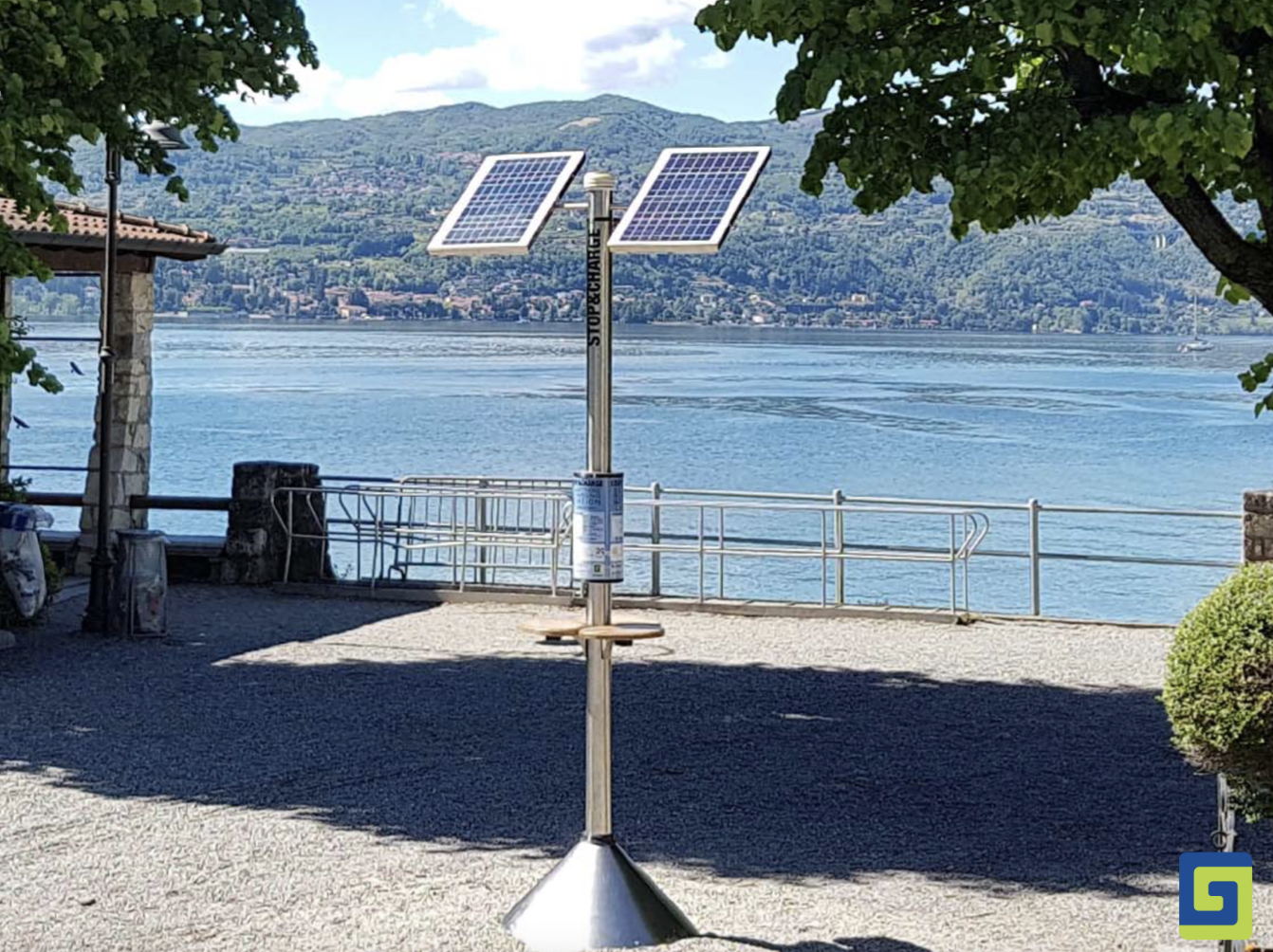The integration of technology into our daily lives has reached a new level with the development of solar-powered charging stations. These stations not only offer an eco-friendly solution for keeping devices charged but also represent a significant innovation in the field of sustainable technology.
What does a solar charging station include
Photovoltaic panels
At the heart of these charging stations is solar energy , captured through efficient photovoltaic panels. Photovoltaic panels convert sunlight into electricity using solar cells, usually made of silicon. These cells generate electricity when exposed to light, thanks to the photovoltaic effect.
Photovoltaic panels are generally composed of the following materials and components:
– Solar cells : They are the key element of photovoltaic panels and are mainly made of silicon, which can be monocrystalline or polycrystalline. Silicon is a semiconductor that transforms sunlight into electricity through the photovoltaic effect.
– Glass: A transparent glass panel protects the solar cells from the elements while allowing sunlight to pass through. The glass is often tempered to resist impacts and adverse weather conditions.
– Anti-reflection layer : This layer is applied on the solar cells to reduce the loss of light by reflection, increasing the efficiency of the panel.
– Frame : Panels are generally framed with durable materials such as aluminum, which offers structural support and facilitates installation.
– Back film : The back side of the panel is covered by a protective material called backsheet , which protects against humidity, dirt and other environmental factors. It is often made of durable polymers such as polytetrafluoroethylene (PTFE).
– Electrical connections and box junction : The cells are connected to each other and to the larger electrical system via electrical connections. A box junction on the back of the panel contains the diodes needed to optimize production and manage current flow.
These components are essential for the construction of a functional and efficient photovoltaic panel.
Battery
Storage batteries for photovoltaic systems are essential for storing solar energy produced and not immediately used. Thus, they allow the electricity accumulated during the day to be stored or to be released when solar production is insufficient or absent, such as at night or during bad weather.
Storage batteries for photovoltaic systems can be of different types:
– lithium ions : They are the most popular due to their high energy density, efficiency and long life. They can handle large loads and numerous charging cycles.
– lead acid : These batteries are cheaper and have well-proven technology, but are heavier and have a shorter useful life and lower efficiency than lithium-ion batteries.
– molten salt : Known for their ability to operate at high temperatures and long life, they are particularly suitable for large-scale energy storage applications.
– sodium ions : An emerging alternative to lithium-ion, offering benefits in terms of costs, material availability and environmental impact. They have potential applications on both small and large scales.
– nickel-cadmium : Resistant to extreme temperatures and overloads, these batteries are used for specific applications that require great durability.
Each of these technologies has advantages and disadvantages that make them more or less suitable for certain contexts and energy storage needs in the photovoltaic sector.

USB Ports and Wireless Charging
Smartphone charging stations are equipped with multiple USB ports, allowing charging of various devices simultaneously. Additionally, wireless charging surfaces offer a convenient option for compatible devices, eliminating the need for cables and facilitating quick, effortless charging.
– USB Port: Offers a reliable connection and uses the cable to charge.
– Wireless Charging: Does not require physical connectors. The devices must be placed on a charging base that transmits energy via magnetic induction. The main wireless charging technologies include the Qi standard, which is very widespread in devices of various brands.
Technology is ” better quality of life “
Solar-powered cell phone charging stations are an excellent example of how technology creates sustainable solutions and improves quality of life. They represent an innovation not only in terms of environmental sustainability but also of public service, ensuring that citizens remain connected and active without the fear of running out of battery.
Practical solutions of green technology
These stations demonstrate the potential of green technologies to integrate harmoniously into the urban environment, offering practical solutions to everyday needs and leading cities towards a greener and more connected future. For small municipalities and private areas such as swimming pools, sports centres, parks etc… there are products that are easy to assemble and maintain, with low investment costs, such as STOP&CHARGE SOLAR LITE CITY.

Solar Lite City smartphone charging station
This station charges up to five devices at the same time, in a simple and elegant way.
Its advanced “cloud-based” technology allows remote control, giving the possibility to activate and deactivate charging points remotely. This function is useful for avoiding improper use and limiting, for example, use at certain times.
STOP&CHARGE SOLAR LITE CITY offer:
– The fast and wireless charging point in use for various smartphone models such as all the latest iPhones and Galaxy S series.
– 4 USB ports that allow fast charging of any other type of portable device.
The STOP&CHARGE SOLAR LITE CITY charging stations are the ideal solutions for the squares of small urban centres, parks and outdoor activities.
STOP&CHARGE SOLAR 2.0
For longer-lasting, unattended installations, where it makes sense to have additional functions, there are more resistant products with greater photovoltaic power and storage capacity, such as STOP&CHARGE SOLAR 2.0
Characteristics
It is the only station able to charge simultaneously smartphones and tablets, e-bikes, scooters and wheelchairs for the disabled with 100% solar energy. It can be equipped with video surveillance, public Wi-Fi, emergency SOS column and local monitoring of pollutions.
We know that smartphones are an indispensable tool for accessing services, for orientation, communicating and documenting, and paying for parking. The battery life of phones is often insufficient, forcing them to recharge throughout the day. The telephone charging station is, therefore, a real public service, like benches or drinking water fountains.
Stations like these are equipped with 9 smartphone charging points with USB and wireless sockets all equipped with fast charging.
Do you want to find out more about GaraGeeks and environmental sustainability products? Contact us .





